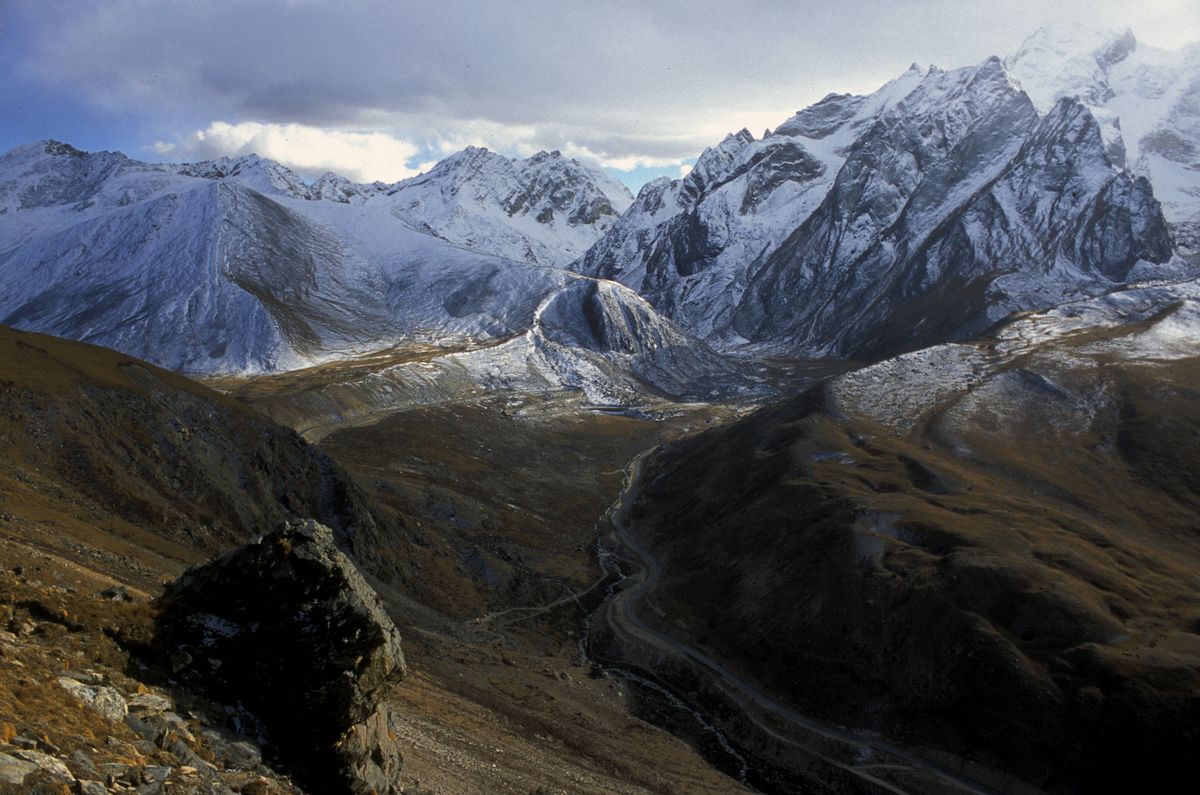
Mountains Crumbled When Earth Cooled

A big chill 2 million years ago bred glaciers that scoured mountains across the planet, pouring trillions of tons of muck into the oceans, researchers said today (Dec. 18) in a study published in the journal Nature.
"We really see the ability of climate to quite dramatically change erosion rates on the surface of the planet," said Frédéric Herman, a geologist at the University of Lausanne in Switzerland.
Geologists have long suspected that a cold climate boosts erosion rates, thanks to clues in ocean floor sediments. When Earth entered a global freeze-thaw cycle starting 6 million years ago, huge pulses of sand and mud started appearing in sediment cores drilled from seafloor — a possible sign that glaciers were suddenly grinding down continents. Researchers are also intrigued by the link between glaciations and a burst in erosion because atmospheric carbon dioxide rises and falls with the waxing and waning of the ice ages, especially starting about 2.7 million years ago.
One way to quickly trap carbon dioxide (on the geologic time scale) and remove it from the atmosphere is in buried sediments. Thus, glaciers, erosion and climate could all combine in one big feedback loop — glaciers advance, increasing erosion, which removes carbon dioxide and further cools the Earth, Herman said.
But the link between big freezes and increased erosion has been hotly contested, because some scientists questioned whether seafloor sediments can accurately gauge erosion that took place millions of years ago. [The Power of Ice: Glacier Erosion]
"Sediments are a proxy for erosion, and the problem is there are a lot of assumptions about what happens when you erode sediments and deposit them," Herman said. "The record you use is usually not complete."
Rocks reveal the past
Sign up for the Live Science daily newsletter now
Get the world’s most fascinating discoveries delivered straight to your inbox.
So Herman and his colleagues turned to the actual rocks. The team assembled a global erosion database from nearly 18,000 cooling ages measured at mountains, plains and valleys. The cooling age technique, which is similar to measuring a rock's age from isotopes (atoms of different weights), tracks how quickly erosion exposed a rock buried below Earth's surface. Rocks cool as they rise to the surface from warmer depths.
The big picture reveals global erosion rates for the past 8 million years, focusing on mountainous regions. Slowly eroding continental edges and plains do not rise quickly enough to reveal potential cooling ages in such a short time period, Herman said.
The findings confirm that erosion picked up starting about 6 million years ago, when Earth's climate started cooling down, and doubled about 2 million years ago, the researchers report.
The most striking speedup in erosion was at midlatitude ranges such as the Alaska Range, New Zealand's Southern Alps and the Chilean Andes, where glaciers are most likely to vanish when Earth warms between glacial cycles, the researchers found. "That variability might be causing these large changes," as mountains switch between erosion dominated by rivers of water or ice, Herman told LiveScience's OurAmazingPlanet. (Water and ice sand down rocks at different speeds.)
Which came first?
As for linking erosion with carbon dioxide, the cooling ages can't prove which came first, the uptick in glacial gouging or the downturn in atmospheric greenhouse gases.
"This really highlights the large magnitude of the increase at midlatitudes," Herman said. However, "we don't know which one was first."
Even though some areas can't be resolved, the new study convincingly demonstrates the global scale of recent erosion, David Egholm, a geophysicist at Aarhus University in Denmark, said in a commentary on the study also published today in Nature. "Their results suggest that climate drives erosion, because, unlike tectonic activity, climate can change synchronously on a global scale," Egholm, who wasn't involved in the study, said.
Email Becky Oskin or follow her @beckyoskin. Follow us OurAmazingPlanet @OAPlanet, Facebook and Google+. Original article at LiveScience's OurAmazingPlanet.













